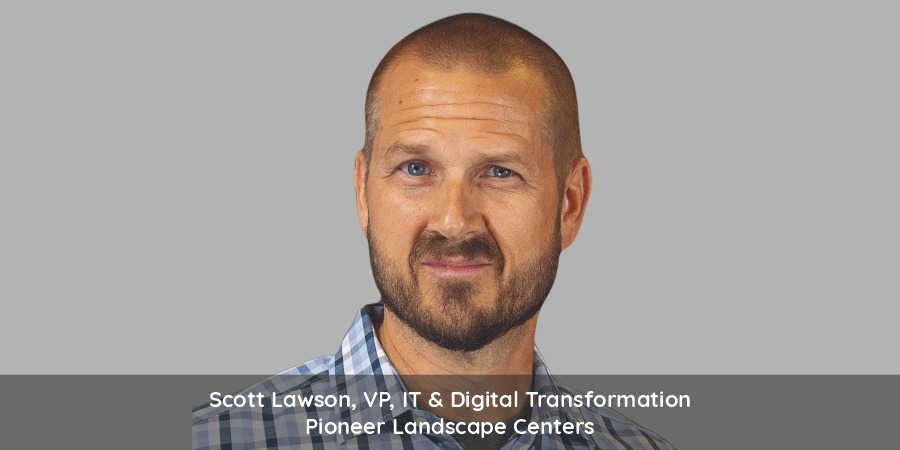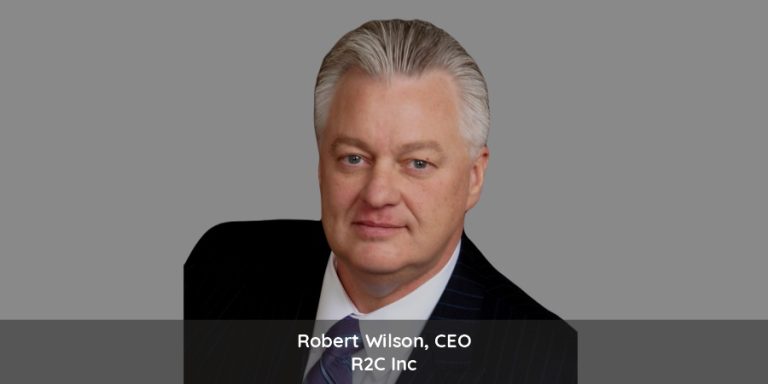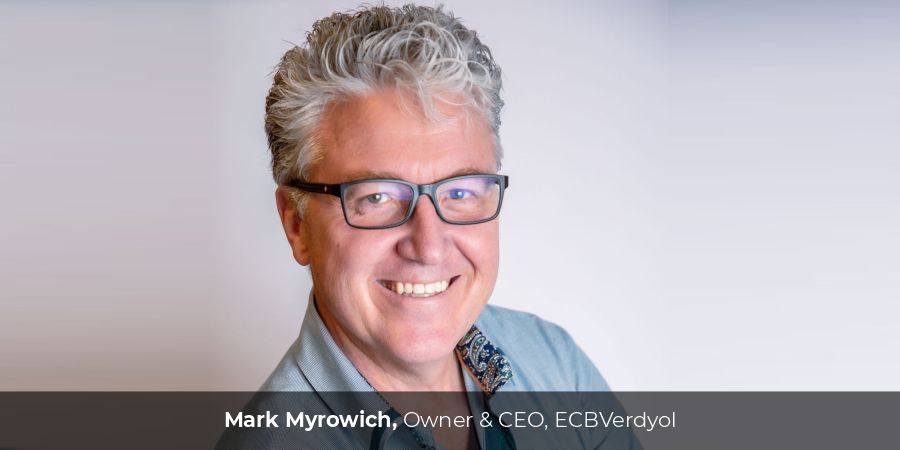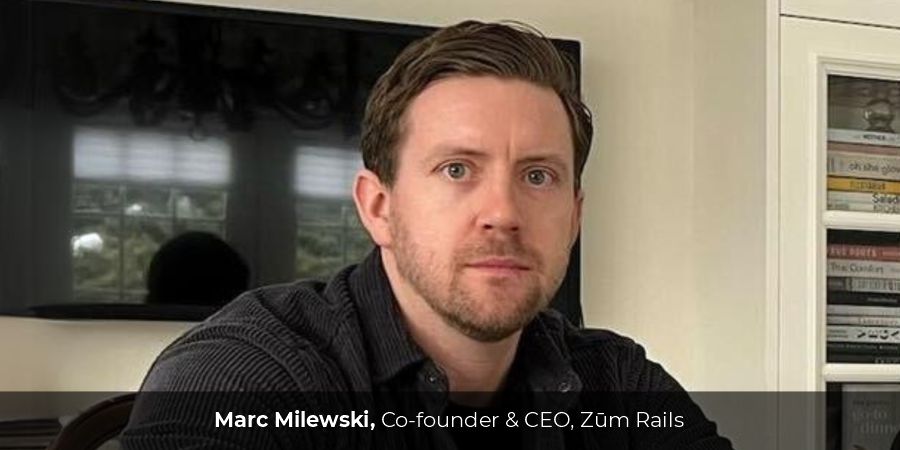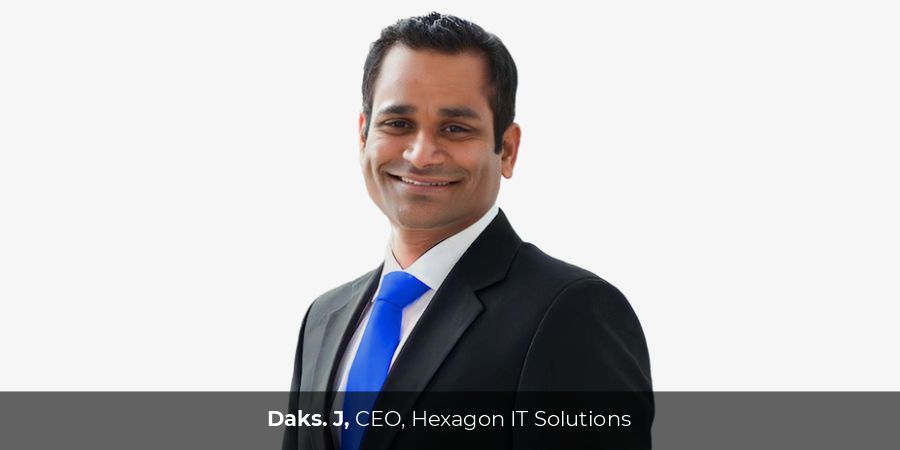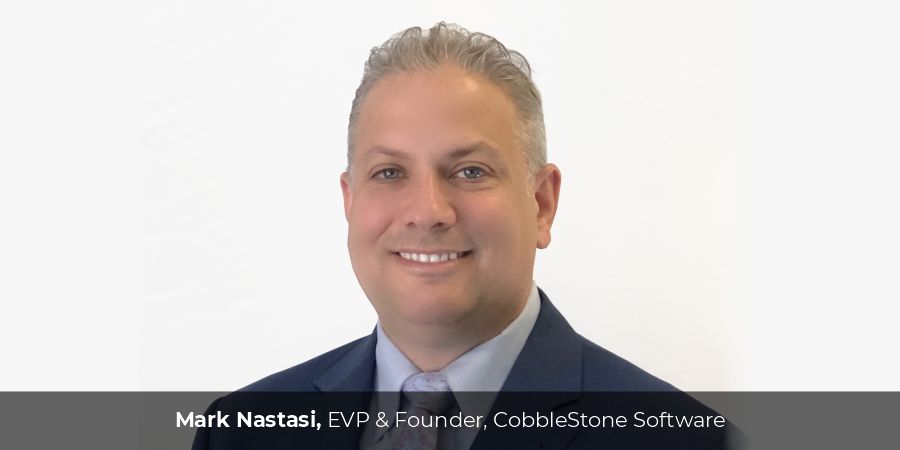You can’t order people to be innovative or mandate stellar performance. Great leaders know that. Instead, they invest in people and delegate responsibility so that operational improvement is owned and activated throughout the organization.
That’s what Paul Tudor, president of Pioneer Landscape Centers, did when he took over a promising regional landscape supply firm. He ramped up staffing, invested in new technology and empowered his team to turn Pioneer into the market-leading operation it is today.
“We wanted to make company processes more efficient and easier for employees,” Tudor said. “If you take care of your employees, they’ll take care of your customers, and those customers will take care of your shareholders.”
Among the changes the Pioneer team has enacted over the past two years, you’ll find a state-of-the-art IT platform that integrates point-of-sale systems, inventory, and distribution management. The company has also implemented a first-class safety program, stood up an all-new sales and support channel, and expanded beyond its traditional retail and commercial sales divisions to support industrial customers as well. Achieving these changes took creative thinking and hard work.
Here’s a look at the company leaders who re-engineered the business and helped transform Pioneer into a top-tier service organization.
Safety first
One of the first programs Pioneer rolled out to show employees that new management was sincere in caring about workers was implementing a rigorous safety program. Tudor started by hiring a new manager of Environment, Health and Safety (EHS): Steven Boleman, a man who earned his stripes by helping another organization earn Star Site Certification in OSHA’s Voluntary Protection Program (VPP).
Earning this designation requires companies to prove they’ve implemented effective EHS systems and maintain injury and illness numbers well below national averages for their respective industries. VPP Star status is so rare, Boleman’s firm was only the 69th California company to earn it out of some 8 million workplaces in the Golden State.
Within a month of being hired at Pioneer in October 2019, Bolman signed the licensing deal with EHS Insight, a leading software package that he quickly began configuring specifically for Pioneer’s business. Then, working with operations colleagues and Barb Reeser, the company’s Vice President of People and Safety, Bolman designed specific “safety walks” to monitor potential risks at retail sites, quarries and within fleet operations. Because the check-off forms on those walks are computer-based, they deliver copious amounts of data into the system and facilitate customized reporting to better serve the business.
Training requirements are met through the system, too. “Before, every new employee got the same orientation, regardless of their job title,” said Reeser. “There was no specific training for our loaders, for instance, even though these people operate heavy equipment around customers.”
Loading up vehicles was one area that generated plenty of damage claims and other issues, so it was prioritized for job-specific training. Using actual loaders and other employees to play various parts, the Pioneer team used drones and GoPro cameras to film several brief but specific videos that cover things like what products could be loaded into which vehicles. “A customer might come in for two-to-four-inch cobble and want it loaded into a pickup truck,” Reeser explained. “But that material can bounce back and break car windows. We were seeing a lot of incidents, so we made some incredibly good and specific videos. I don’t think there’s anybody else in the industry doing that right now.” As a result, Boleman said property damage claims have dropped by 17.4% between 2020 and 2021, and loader-related incidents are down 52% after the implementation of a new loader certification process.
If the shoe fits
Pioneer also continuously invests in safety. Any employees who sign on get whatever safety gear they need: personalized safety vests to make people visible in the yard where customers are driving, hard hats for those who need them, safety glasses, plus vouchers to help employees buy steel-toed shoes – a requirement for all retail workers.
“Just last week, a 1,000-pound boulder fountain fell on an employee’s foot. She had no injury at all. If she didn’t have those shoes, her foot might have been shattered,” Boleman said.
The company invests in safety for customers, too. “We had an incident where a customer had a heart attack on site. Now every one of our sites has an automated external defibrillator, and all of our store managers and their assistant managers know how to use it and perform CPR,” Boleman said.
Already, these efforts have saved the company money, with a $150,000 reduction in workman’s comp claims between 2019 and 2020. Enhanced training and safety regimens have also reduced the number of safety incidents overall by 57%, and Pioneer now has a total recordable incident rate that’s 44% lower than industry averages.
Right now, the company is trying to incentivize employees to report “near-miss” accidents and hazards. “We have a no-blame culture, and we want employees to understand that reporting problems are a good thing. It’s how we identify hazards in the business, and then we can take action to prevent them, Reeser said.”
Yard sales
Some 60 percent of Pioneer’s customers are landscaping contractors, and more than half of them are also owner-operators of their business, people working side-by-side with employees, managing sales and services for their firms, often moving from one job site to the next throughout the day: It’s a busy role, so any time a contractor spends in Pioneer’s rock yard or store decreases his or her earning ability.
During busy season, contractors were spending an average of 30 minutes per trip in the landscape centers every time they came in to order materials. Now, contractors are in and out in just over 10 minutes. Pioneer did this by borrowing ideas from the restaurant industry, said Craig Mauk, Pioneer’s Vice President of Retail Sales and Operations.
“In many restaurants, as soon as an order is placed, the timer starts ticking because there are key performance indicators– cooks and servers have to get food out of the kitchen and onto the table,” Mauk continues. “We applied timers to customer handle times – that’s how long people wait for loaders to load the purchase in a vehicle so customers can be on their way.”
The system starts timing how long a customer waits as soon as that customer places an order. Pioneer sells bulk products – rock, mulch, flagstone and other materials – so everything gets weighed, then loaded up into the customer’s vehicle. That completes the sale. Within the Pioneer point-of-sale system, a color-coded alert shows up on the sales associate’s computer screen to tell store workers how long a customer has been waiting for a loader. When the customer places the order, the light by his name is green. After five minutes, it’s orange and, at the 10-minute mark, it turns red. “When the store associate sees a bright red flashing light on the screen, they can proactively go find that customer and find a solution to the delay,” Mauk said.
Implementation of a mobile point-of-sale system is another way Pioneer serves contractors efficiently. The company’s new point-of-sale system enables store associates to log in from any device – computer, phone or tablet – and go out in the yard to help customers directly. “Homeowners need us to walk outside and explain things,” Mauk said. “With the mobile point-of-sale system, we can help homeowners out in the yard but also take orders for contractors, so they don’t need to stand in line in the store. We get them in and out quickly.”
Another way Pioneer saves time for its contractor customers is through a phone-based customer support team launched last year. Before adding this team, a busy store could receive 1,000 calls a day, many of which were people looking for things like store hours and location – information they can now get from an interactive voice response system. Those who need to ask a question or place an order get connected to the support center.
“We started this in February of 2020 with two people. Now we have more than 20 service representatives, two supervisors and a manager, and now 90 percent of calls are people who want to place an order,” Mauk said. “This year, they’ll process nearly $20 million in delivery revenue.”
He adds: “All of these changes have given me a strategic advantage to take market share. We’re projecting revenue growth and up to a 10 percent increase in our share of the market.”
Digging down to move up
Mining dates back some 40,000 years, and open-air quarries used for uncovering construction materials predate recorded history. While quarrying may be an ancient activity, even Pioneer’s quarry operations have seen an overhaul.
Chief Operating Officer Kevin Guzior, who runs the quarries and several other departments, will modestly tell you it was just a back-to-basics effort. “We focused on getting the quarries to be more efficient and producing the right types of products,” he said.
There was more to it than that, though. For one thing, quarry operations were tied into the organization’s inventory and replenishment systems, something that hadn’t been previously done. Now, quarry operations prioritize what to produce based on what’s actually needed at the stores. “It’s all based on sales cycles and complex algorithms in forecasting software,” Guzior said. Most of that software was home-grown, coded by Pioneer’s own IT department.
The quarries also have expanded what they produce. Rock-washing plants at the quarries make multiple versions of the same rock, Guzior explained. After mining raw material out of a river bed or ancient river basin, the wash plants move that material through a series of decks with successively finer screens in them. “Older plants can be limited in their production due to the number of decks along with age and parts,” he continued. “With our upgrades, we have multiple decks producing additional products with less downtime.”
In Colorado, that includes making a material known as squeegee, or round pebbles that are only a few millimeters in diameter, which means it’s even smaller than pea gravel. “There’s almost no by-product coming out of our plants anymore,” Guzior said. “We used to produce a bunch of by-product that would slow down production because twice a week, we’d need to stop and clean it out of the system. Now we don’t need to do that, and we have more product to sell.”
The quarry group also has more people to sell to thanks to Guzior’s focus on industrial sales. “There’s pretty rock and ugly rock,” he jokes. “Pretty rock is the stuff people put in their front yard, but they don’t realize ugly rock is in there, too. It’s in the pavers making a path around the house or in the concrete of the driveway.”
Guzior leveraged relationships with companies that make the pavers Pioneer sells and, three months after deciding to go into industrial sales, he had his first sale. Creating sand and gravel for industrial processes requires adherence to rigorous standards, so Pioneer amped up its own quality testing and started using water clarifiers in the washbasins. Clarifiers are chemicals that attract the heavier particles in the sand, pulling them down to the bottom of the wash tank and producing much cleaner wash water in the end.
In fact, clarifiers are so effective, they can “reduce the need for settlement ponds,” a waste of real estate at the quarry. Clarifiers also can help quarry operators reclaim as much as 90 percent of the water they use, which is important in water-scarce states like Colorado and Arizona, where Pioneer operates. In addition, the clarifiers help Pioneer meet customer standards for industrial-grade sand. Two years into the program, industrial sales now make up 8 percent of the company’s revenues.
Rock-IT science
Growth and efficiencies may be the result of many Pioneer system enhancements, but the original goal was to enable employees to deliver great customer service and to make it easier to do business with Pioneer. The key to that was an information technology overhaul featuring a unique design and development approach that touched every corner of the business.
“Many companies in our industry, including Pioneer, have been slow to adopt technology or have outdated systems and processes,” said Scott Lawson, VP of IT and Digital Transformation for the company. “Consumers have expectations of the experience they should receive when shopping at brick-and-mortar retail locations as well as online.” Until recently, Pioneer fell short in meeting some of those expectations. However, thanks to the IT Team and the Senior Leadership-sponsored company initiative, Pioneer has implemented best-in-class systems across the entire business, many of which are unprecedented in the industry.
IT transformation at Pioneer isn’t just a matter of adding technology. Lawson and his team served as the backbone for initiating change and helping define business process improvements. This became a catalyst for the company initiative that ultimately drove automation and integration of disparate systems.
When Lawson came to Pioneer four years ago, the company had a staff of three in IT who primarily provided desktop support. The first two years under Lawson’s leadership consisted of laying down a technical foundation to support growth and stability. This involved implementing a new network architecture, data warehouse, mobility strategy and cyber security platform. Now, Lawson’s team consists of 15 people, including five developers, who took the past 18 months to design, build and integrate all of Pioneer’s systems through a digital transformation into one platform: Pioneer OS.
“One significant challenge we needed to solve and improve upon was our inventory control. We had data inconsistencies, lack of data, lack of visibility and supply chain issues,” Lawson recalls. “Our employees were hindered by an abundance of manual processes that relied on pen and paper or switching between multiple spreadsheets and a cumbersome ERP system. It was ultimately impacting our customers because our stores would not have the necessary inventory on hand to keep up with demand.”
Pioneer OS now integrates the revised point-of-sale system with inventory control, ERP, HRIS and the transportation management system to ensure stores are getting the inventory they need. Meanwhile, distribution is more efficient because truck capacity and routing-optimization engines. As soon as product is sold by any channel in the firm, a centralized inventory system automatically calculates restocking needs and prioritizes deliveries based on rules engines, historical data and machine learning. Deliveries are scheduled by a system that algorithmically calculates optimal routing and sends it to a driver’s onboard tablet. All of the integrations necessary to deliver these changes were developed fully in-house by Pioneer IT or co-developed with their strategic partners.
“Typically, when someone in a business goes to their IT department and says, ‘I need this functionality,’ often times a developer will simply say, ‘Ok. I’ll go build that for you,’” Lawson noted. “At Pioneer, our developers work closely with the other departments and dig in to understand what the business challenge is before they develop anything. More often than not, we built a better mousetrap by finding out what problem someone is trying to solve and by gaining an in-depth understanding of the process, the desired outcome and how that outcome needs to be measured.”
“We do a lot of custom work for end-users who aren’t necessarily familiar with complex back-office systems,” he continued. Because the ERP system is a bit cumbersome to use, Lawson and his team decided to help users avoid it. They have built a number of web apps for end-users to make their jobs easier and more efficient. This also significantly reduces training time and provides an additional layer of system security.
The apps handle very small, specific bits of work. For instance, issuing a credit memo or creating a customer quote used to be an involved process that required end-users to log into the ERP and navigate through several screens and workflows.
Now, with Lawson’s app-based approach, employees use a web interface and follow a simplified workflow, that only applies to the task at hand, which then automatically updates the ERP.
“This approach has made our end users far more efficient and happier. In addition, related IT support tickets have been dramatically reduced due to the simplicity of the process and by keeping folks out of the ERP whenever possible,” Lawson said.
This and all the other changes – big and small – that Pioneer’s team has achieved through the past two years proves the company’s president, Paul Tudor, had it right: Make life easier for your people, and your people will make the business better.
About Pioneer
Established in 1968, Pioneer is a leading distributor of landscaping and hardscaping materials in the western United States. With 34 retail distribution centers and 20 company-owned and operated quarries and production facilities in Colorado and Arizona, Pioneer is uniquely positioned to serve industrial, commercial, wholesale and residential customers.



